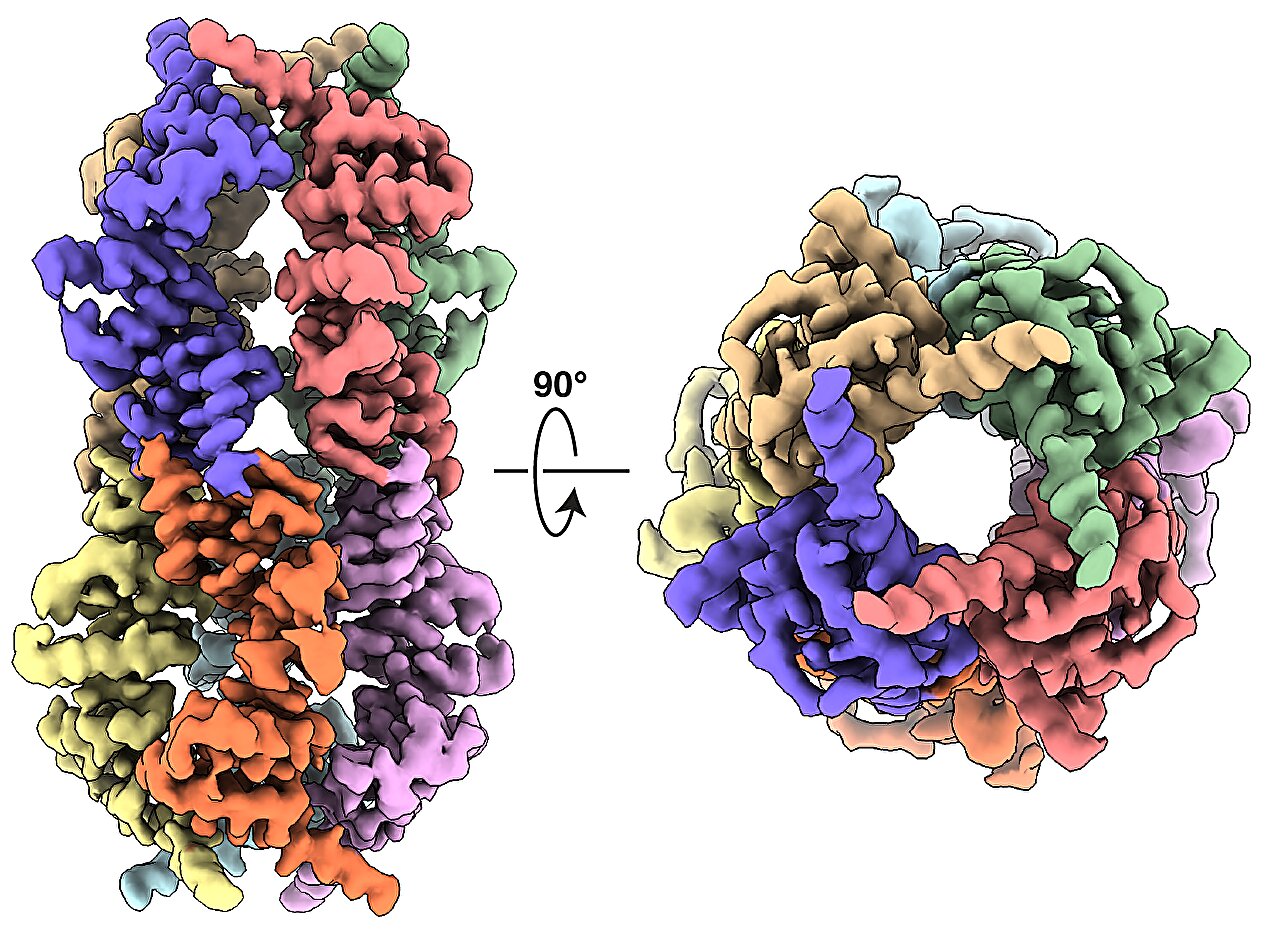Mitochondria, known as the “powerhouses of the cell”, play a vital role in maintaining overall health by supplying energy. However, mitochondrial stress is associated with aging and age-related diseases, such as neurodegeneration, and the molecular mechanisms behind this stress response have been poorly understood. A recent study by scientists at Scripps Research has unveiled a significant step in this process.
The study, published on August 7, 2023, in the journal Nature Structural & Molecular Biology, demonstrates the crucial role of a mitochondrial protein structure in activating the integrated stress response (ISR) in cells. This structure, composed of the protein DELE1, could potentially serve as a target for future therapeutics in age-related diseases.
“Understanding the molecular details of this signaling pathway could potentially lead to the development of treatments for various diseases, including neurodegenerative diseases, cancer, and heart disease,” says Jie Yang, Ph.D., the first author of the study from the lab of Gabriel Lander at Scripps Research.
Mitochondria must continuously sense and respond to various stressors, such as viral infections and iron deficiency, to maintain cellular function and health. However, their ability to do so declines with age.
“Just like other parts of our body, mitochondria age and become less productive,” explains co-author Kelsey Baron, a graduate student in the lab of Luke Wiseman at Scripps Research. “Decreased mitochondrial productivity results in reduced energy for cells to combat different stressors, which many believe is a major trigger for neurodegeneration.”
One way mitochondria cope with stress is by activating the ISR. Previous studies have revealed the involvement of the DELE1 protein in initiating this stress response, but its molecular structure was largely unknown. Characterizing the structure of DELE1 is a crucial step towards understanding and treating diseases associated with mitochondrial stress.
The researchers focused on a fragment of DELE1, known as the C terminus, which is known to play an active role in initiating the ISR. Surprisingly, when they isolated this fragment, they discovered that it was much heavier than expected, indicating that multiple copies were binding together. Utilizing electron microscopy, the team revealed that this protein complex, or oligomer, formed a highly symmetrical cylindrical structure composed of eight identical fragments—an octamer.
“It was completely unexpected that it was forming this much larger, oligomeric structure,” says Gabriel Lander, Ph.D., co-senior author and professor in the Department of Integrative Structural and Computational Biology at Scripps Research. “It’s kind of like two four-legged spiders whose legs are intertwined to form this flexible cylindrical structure.”
The researchers captured over 12,000 electron microscope images of the octamer and employed algorithms to create a three-dimensional structural model. By examining the positions of different amino acids within the structure, they identified the amino acids involved in binding and assembling the octamer.
To confirm the requirement of DELE1 oligomerization in activating the ISR, the researchers introduced mutations into key amino acids, disrupting the ability of DELE1 to bind together. When they cultured cells containing this mutated, non-oligomerizable version of DELE1, the cells were unable to activate the ISR, indicating that oligomerization is critical for initiating this stress signaling pathway.
The next step is to utilize this structural information to manipulate these pathways, particularly in different diseases and disorders, according to the researchers.
“Knowing that oligomerization is a potential site of regulation provides a platform for potential drug development,” says Luke Wiseman, Ph.D., co-senior author and professor in the Department of Molecular Medicine at Scripps Research. “Targeting this pathway has the potential to improve outcomes in various disorders.”
Alongside Jie Yang, Kelsey Baron, Luke Wiseman, and Gabriel Lander, the study’s authors include Daniel E. Pride, Anette Schneemann, Wenqian Chen, and Albert S. Song of Scripps Research, as well as Xiaoyan Guo, Giovanni Aviles, and Martin Kampmann of the University of California, San Francisco.
More information:
Jie Yang et al, DELE1 oligomerization promotes integrated stress response activation, Nature Structural & Molecular Biology (2023). DOI: 10.1038/s41594-023-01061-0
Citation:
“Spider-like” mitochondrial structure initiates cell-wide stress response (2023, August 7)
retrieved 7 August 2023
from https://phys.org/news/2023-08-spider-like-mitochondrial-cell-wide-stress-response.html
This document is subject to copyright. Apart from any fair dealing for the purpose of private study or research, no
part may be reproduced without the written permission. The content is provided for information purposes only.
Denial of responsibility! TechCodex is an automatic aggregator of the all world’s media. In each content, the hyperlink to the primary source is specified. All trademarks belong to their rightful owners, and all materials to their authors. For any complaint, please reach us at – [email protected]. We will take necessary action within 24 hours.

Jessica Irvine is a tech enthusiast specializing in gadgets. From smart home devices to cutting-edge electronics, Jessica explores the world of consumer tech, offering readers comprehensive reviews, hands-on experiences, and expert insights into the coolest and most innovative gadgets on the market.


